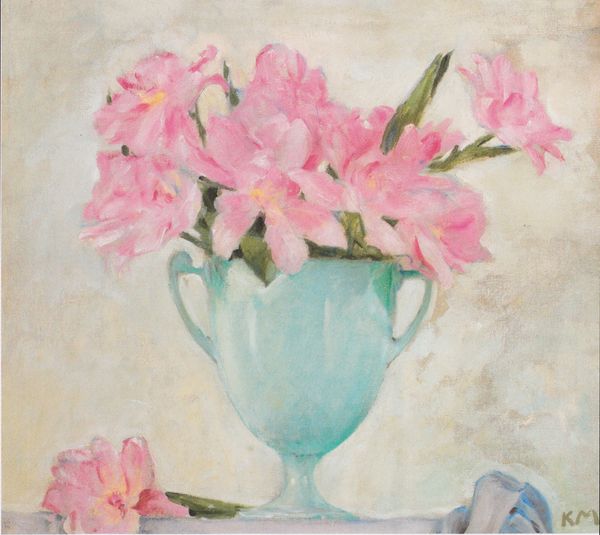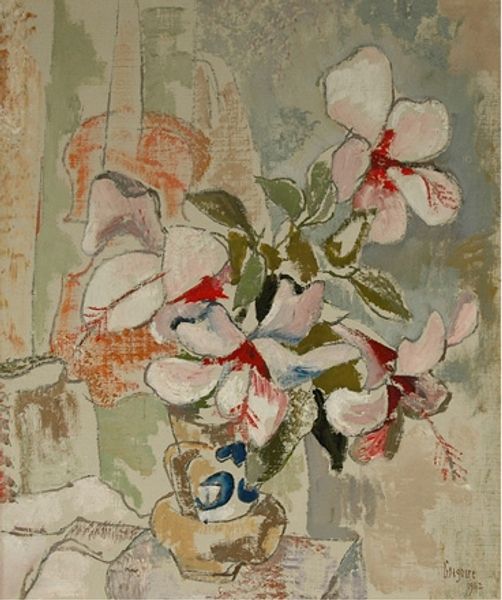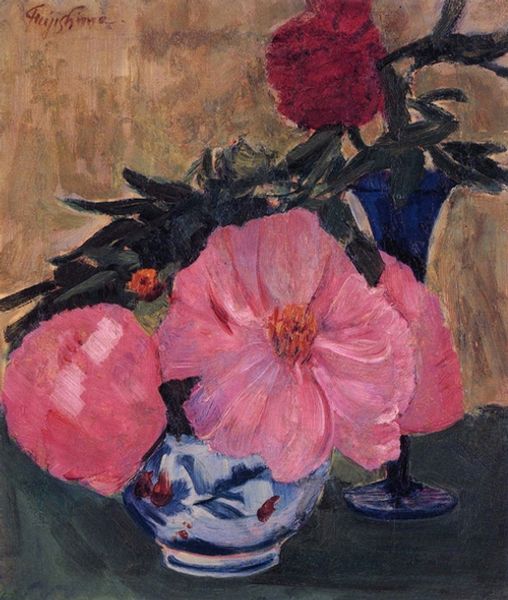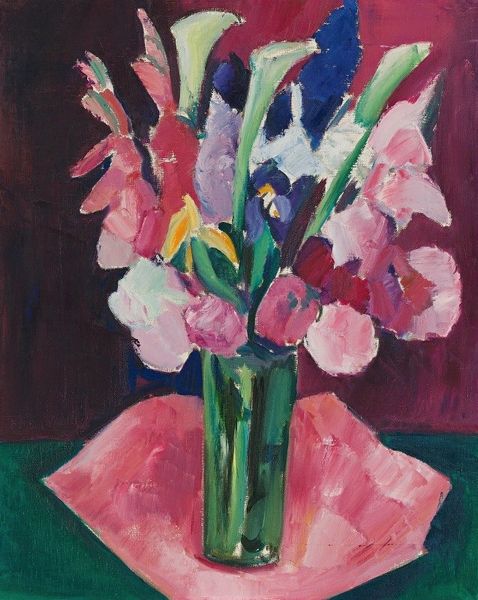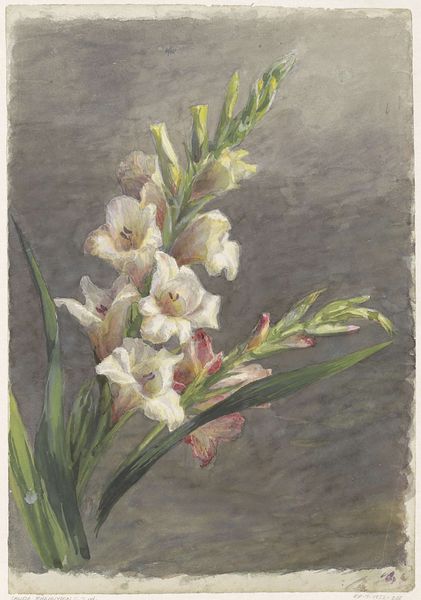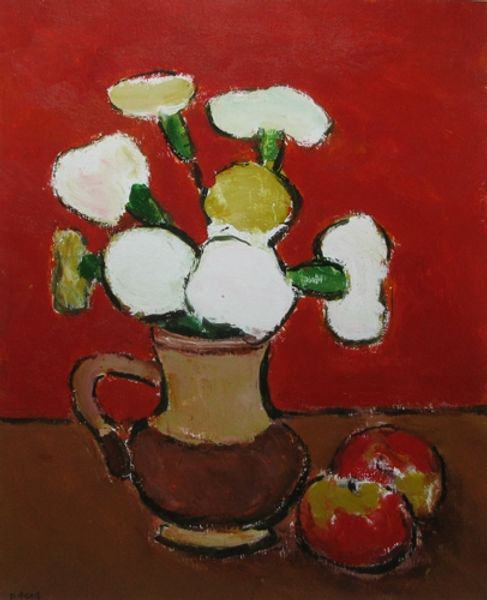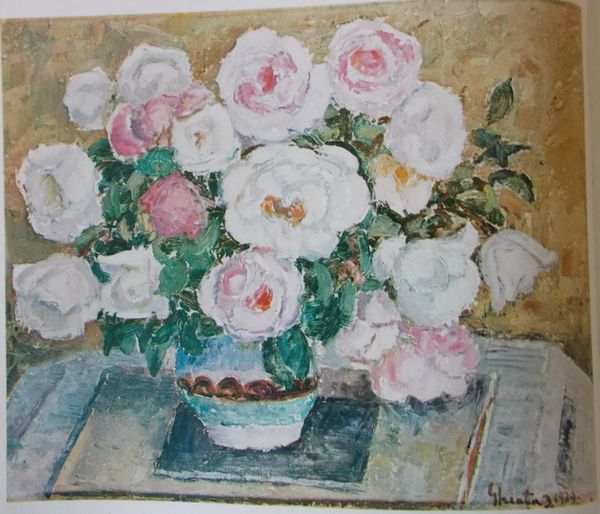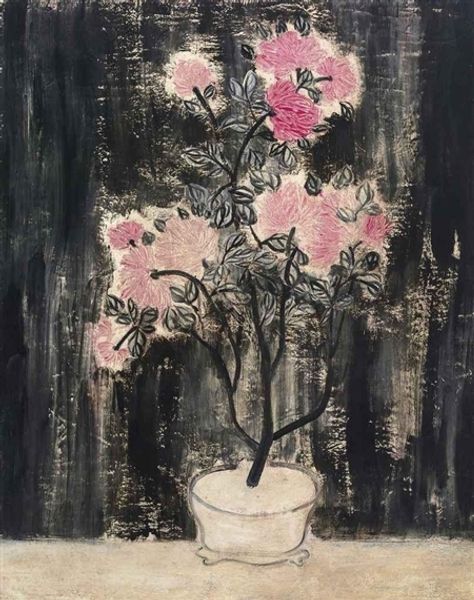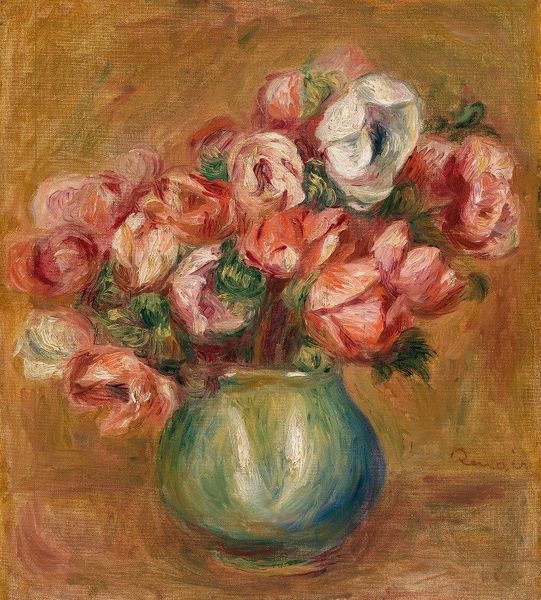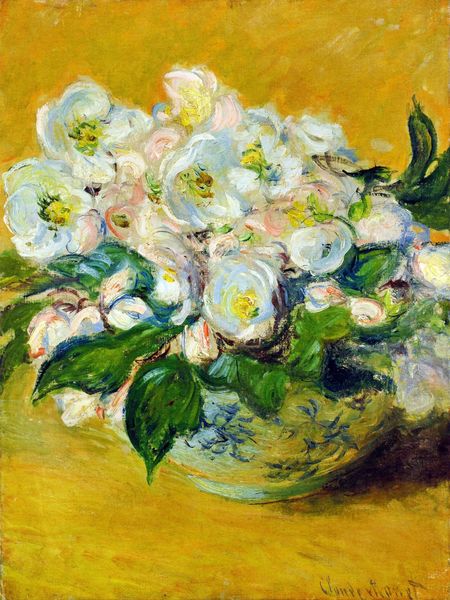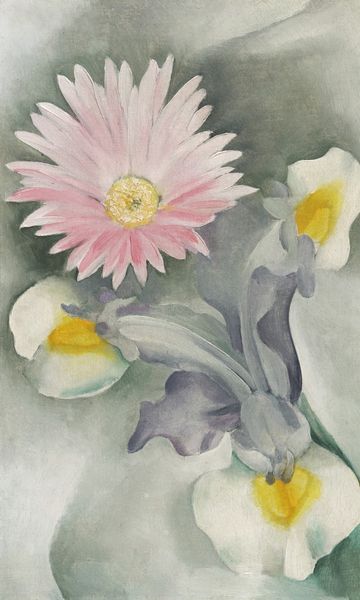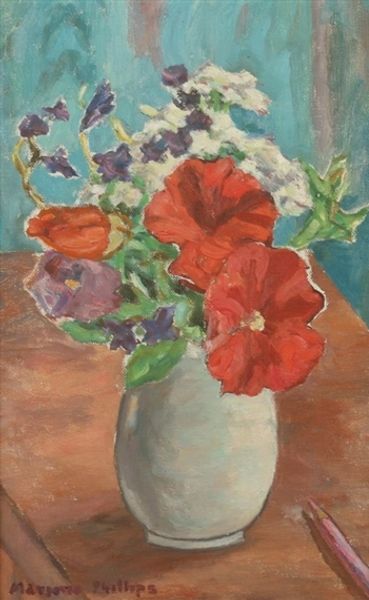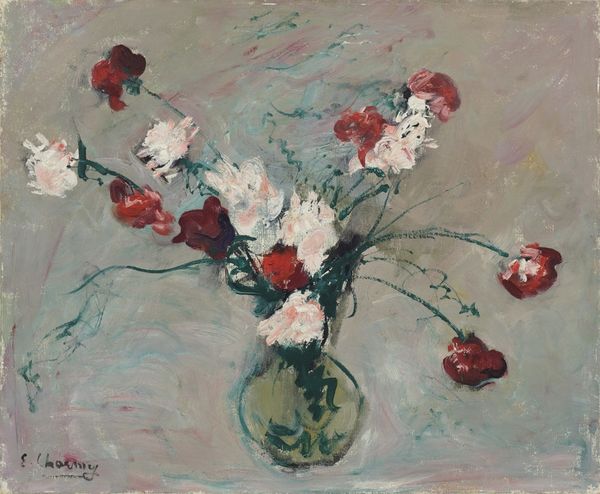
painting, photography, watercolor
#
still-life
#
painting
#
rayonism
#
photography
#
watercolor
#
symbolism
Copyright: Natalia Goncharova,Fair Use
Editor: This watercolor piece, "Dogwood Blossoms," is attributed to Natalia Goncharova. The colors are very delicate, a dreamy blend of blues and pinks. How do you interpret this work? Curator: I see this still life as an engagement with the socio-political context of early 20th-century Russia. Goncharova, as a key figure in the Russian avant-garde, used floral imagery to subtly challenge the rigid constraints imposed on women and the natural world. Editor: How so? It looks quite traditional at first glance. Curator: Exactly. By employing a seemingly traditional genre, the still life, she cleverly subverts expectations. These aren't simply pretty flowers; they're a symbolic assertion of freedom and a gentle protest against societal norms. Think of the Symbolist movement – the use of flowers can be related to themes of decay and death or, equally, life, renewal and beauty. What kind of space was Goncharova carving for herself, as a woman, as an artist, in a pre-revolutionary context? Editor: So, the delicate beauty is intentional, a kind of... camouflage? Curator: Perhaps. Or a way of imbuing the everyday, the domestic, with revolutionary potential. These flowers, then, become quiet symbols of resistance, offering a feminine perspective in a patriarchal society. Editor: That's fascinating. I'll definitely look at still lifes differently now. Curator: Good, because these dialogues help reveal the layered meanings of art beyond the aesthetic surface, which offers critical tools for the analysis and reshaping of culture.
Comments
No comments
Be the first to comment and join the conversation on the ultimate creative platform.
